Kongjia Cooperative with Fair Trade and Organic cultivation Certification Kongjia Coffee Bean Flavor
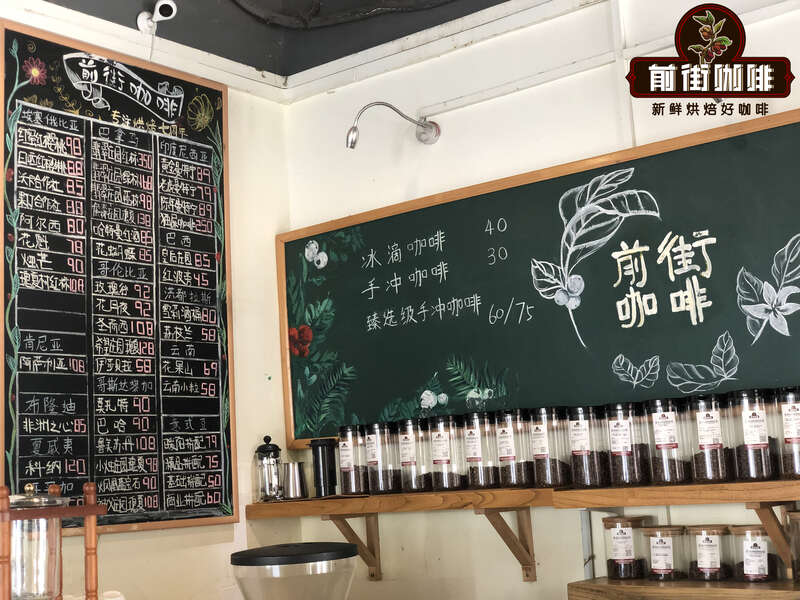
Professional coffee knowledge exchange more coffee bean information please follow the coffee workshop (Wechat official account cafe_style)
There are different cooperatives in Ethiopian coffee producing areas, each of which helps coffee farmers in a region to better grow and sell their own coffee beans. In this article, Qianjie continues to talk about the cooperatives in the Yegashifi producing area, the Conga cooperatives with fair trade and organic cultivation certification.
Kongjia cooperative
The Konga Cooperative is located in the Gedeo area a few kilometers south of the town of Yega Sheffield and belongs to the Yega Sheffield coffee producing area, while the name of the Konga Cooperative comes from the nearby Konga River and the local Konga village. The Kongjia cooperative is more than 1800 meters above sea level and the harvest period is from October of each year to February of the following year.
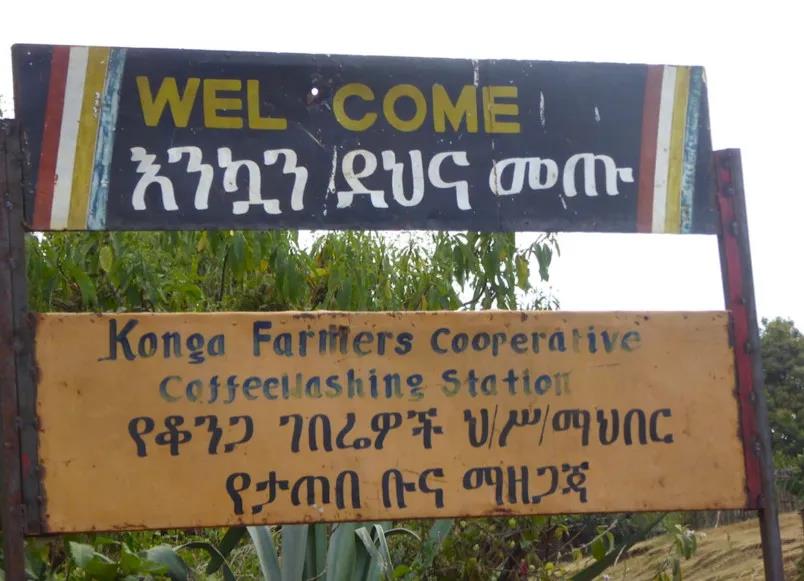
The Conga Cooperative, which belongs to the YCFCU Yega Sheffield Coffee Farmers' Cooperative Union, joined in 2002. According to the data given on the official website of YCFCU, Kongjia Cooperative is a farmer with 2292 farmers who grow coffee on 3361 hectares of land. Konga Cooperative has Fair Trade Certification and Organic planting Certification.
Kongjia Cooperative is located in Gedeo area. Most of the soil in Gedeo area has high iron content, and the soil depth is more than 1.5m. Deep soil is good for coffee trees to take root and absorb water and nutrients from the soil. Iron is a trace element necessary for the synthesis of chlorophyll. Iron-deficient plants cannot synthesize chlorophyll even under the condition of light. Qianjie believes that the soil with high iron content makes coffee trees produce enough chlorophyll, so that coffee trees can better carry out photosynthesis to store nutrients, thus improving the quality of coffee fruits.
Kongjia Cooperative won the championship of TOH tanning group in the new season.
According to foreign media reports, the champion of Ethiopia's TOH (the taste of harvest) tanning group in the new production season in 2020 comes from the Kongjia Cooperative. T.O.H (Taste of Harvest) is a harvest cup test contest initiated by the African boutique association (AFCA) in 12 coffee producing countries in Africa every year, which is similar to the C.O.E Excellence Cup competition. The process of the T.O.H competition is as follows: in the preliminary stage, the batches of the cup test less than 80 points are eliminated, and the highest quality raw beans from each region are gradually selected to enter the national competition, and then the domestic and international judges use the standards of the American Fine Coffee Association (SCAA) to test and score the cup. the one with the highest score is the annual national champion.
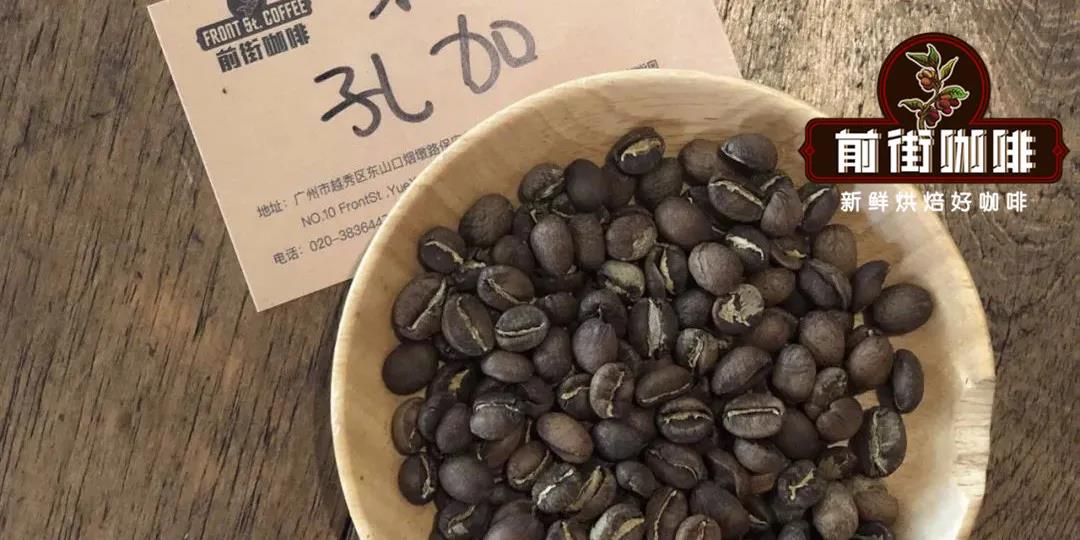
Qianjie Coffee-Yega Feikonga Cooperative Walt processing Station Solar G1
Producing area: Yega Sheffield Conga Cooperative
Water washing station: Walter Kong plus treatment station
Altitude: 1850-2050m
Variety: native species
Treatment method: sun treatment
Grade: G1
Walter processing station
Located in the village of Kongjia, the name of the river that flows through the treatment station, the water used by the treatment station also comes from this river. The Walt processing Station collects coffee fruits from more than 600 to 700 surrounding coffee farmers, each with an average planting area of less than one hectare and less than 1500 coffee trees per hectares. these coffee trees are grown with other crops (sweet potatoes, mangoes and avocados). This hole with coffee beans from the front street is sun-treated, and the sun-treated coffee beans have the taste of compound fruit juices and the sour and sweet of ripe berries.
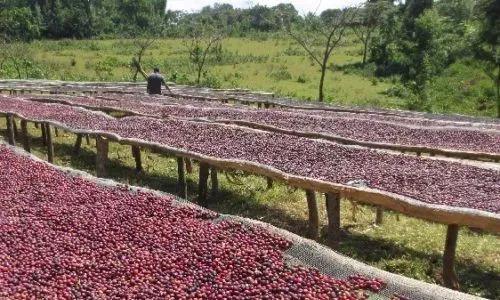
The ripe coffee fruit will be harvested, first pick out impurities and inferior beans, pour the coffee fruit into the sink, the ripe and full fruit will sink to the bottom of the tank, the immature or defective fruit will float to the surface, and the ripe coffee fruit sunk at the bottom of the tank will be fished out, spread on the elevated shed of the exposure field for sun drying, isolating the contact with the ground, and preventing the smelly smell of the soil produced during the sun exposure. Then reduce the moisture from 70% to 10-12%. The fruit needs to be turned several times a day to dry evenly, and it needs to be covered at night to avoid moisture. After about two to four weeks of exposure, the outer layer of the coffee seed has been dry and hard. Then use a sheller to remove the shell.
Coffee variety
The variety of this coffee bean in Qianjie is a native species, and most Ethiopian coffee varieties are named after this name, in fact, because there are so many varieties, it is like the natural gene bank in Arabica, on the one hand, there are many varieties, and it is difficult to identify and classify them. On the one hand, the Ethiopian government is unwilling and unable to disclose information about these varieties for the sake of protection. That's why Essel's coffee beans are of different sizes.
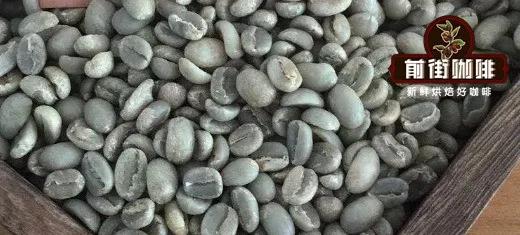
Suggestion of roasting coffee holes with coffee beans in the front street
The front street baker uses Yang's 800N semi-direct fire, the amount of beans: 480g: the furnace temperature is 175 degrees Celsius into the pot, the throttle is opened 3, the firepower is 130, the throttle is unchanged, and the temperature recovery point is 3928 ". When the furnace temperature is adjusted to 4150 °C, the throttle does not change, and the firepower drops to 110. at this time, the bean table turns yellow, the smell of grass disappears completely, and enters the dehydration stage.
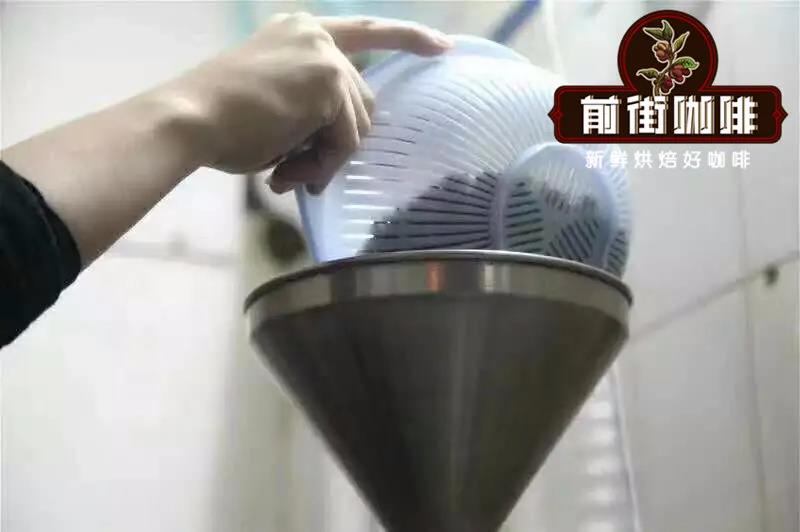
The smell of toasted bread has obviously changed to the smell of coffee, which can be defined as a prelude to an explosion. At this time, it is necessary to listen carefully to the sound of the explosion point. The sound of the explosion point starts to explode at 8pm 39between.When the throttle is adjusted to 5, the development after the explosion is 0,000,39between50 and 189 degrees.
Test report of coffee hole and coffee bean cup in front street
Qianjie Coffee will be tested within 8-24 hours after the sample beans are roasted. The cup test uses a ceramic bowl with a capacity of 200ml and a water temperature of 94 °C. The cup test grinding degree is 20 standard screen (0.85 mm), the pass rate is 70% Mel 75%. Ratio: 11 grams of coffee powder and 200 milliliters of hot water, that is, 1VR 18.18, so that the concentration of the extract is exactly within the range of 1.15% Murray 1.35% gold cup, and the soaking time is 4 minutes.
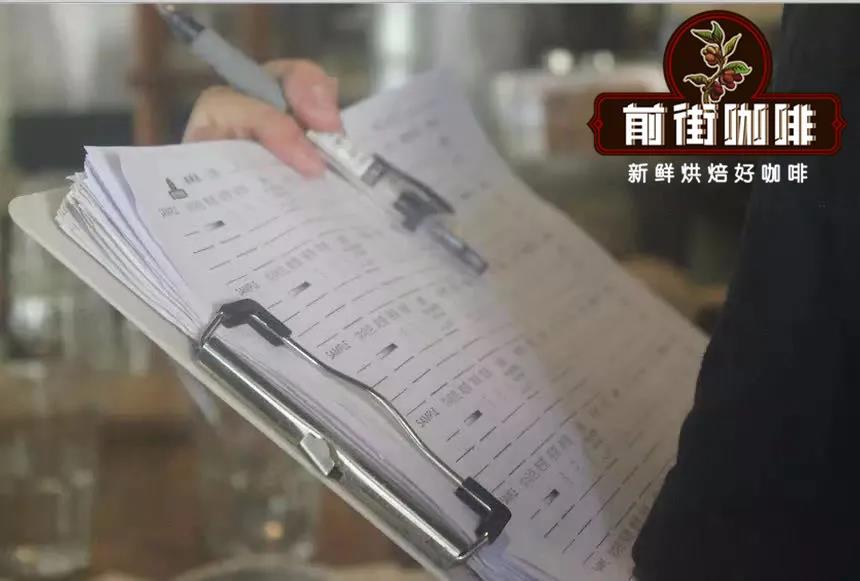
Dried fragrance: citrus
Damp fragrance: Jasmine
Flavor: citrus, honey, green tea, jasmine
Experience of coffee brewing hole and coffee beans in Qianjie
Filter cup: V60 # 01
Water temperature: 90-91 degrees
Powder content: 15g
Ratio of powder to water: 1:15
Degree of grinding: medium fine grinding / fine sugar size (20 sieve bowl sieve powder to 80%)
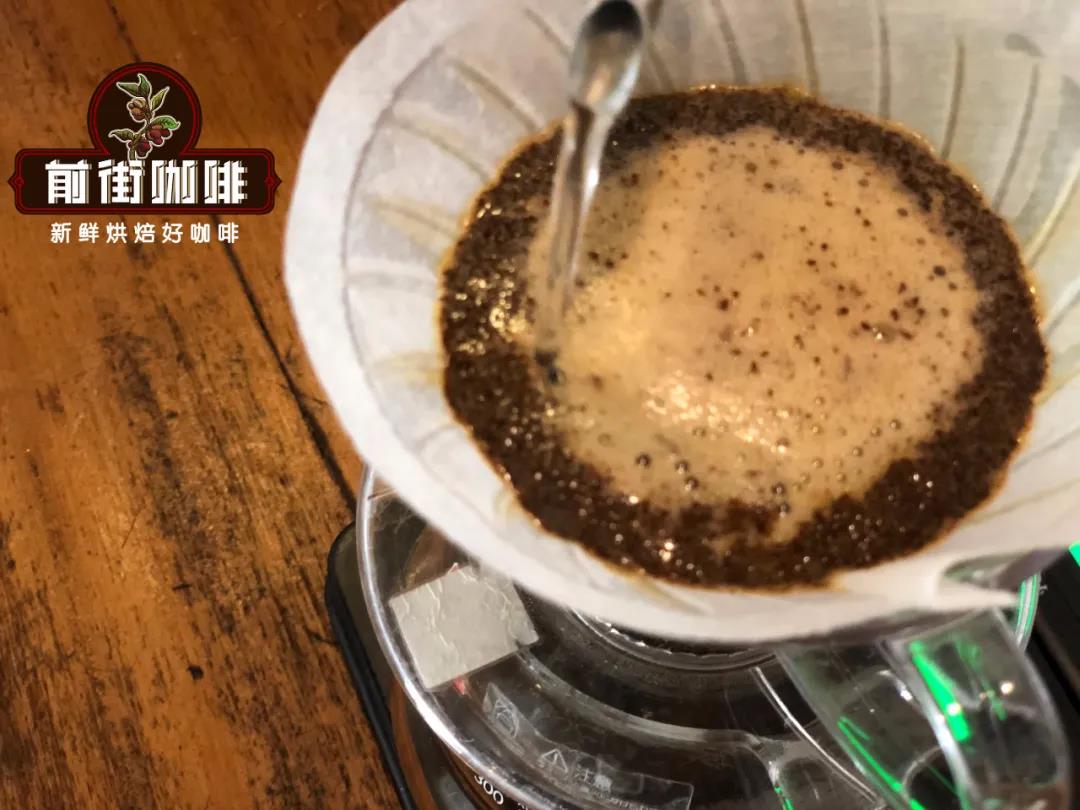
The front street cooking technique: first wet the filter paper and preheat the filter cup and the coffee pot. Steam with 30 grams of water for 30 seconds, small water flow around the circle to 125 grams for sectional injection, water level drop is about to expose the powder bed, continue to inject water to 225 grams to stop injection, and so on when the water level drop is about to expose the powder bed to remove the filter cup, (steaming starts timing) extraction time is 2 minutes 39 percent 10 ".
Cooking flavor: when high temperature is berries, cream, honey, citrus, juice-like taste, sour bright. When the temperature is slightly lower, it is berries, cream, smooth, citrus.
For more boutique coffee beans, please add private Qianjie coffee on Wechat. WeChat account: kaixinguoguo0925
Important Notice :
前街咖啡 FrontStreet Coffee has moved to new addredd:
FrontStreet Coffee Address: 315,Donghua East Road,GuangZhou
Tel:020 38364473
- Prev
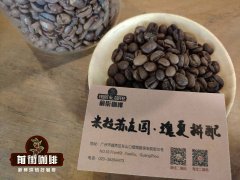
What is treated with Costa Rican coffee honey? Introduction to the traditional way of brewing coffee in Costa Rica
Last year, Costa Rica produced more than 85 million kilograms of coffee. Coffee has been grown in the country since the 18th century. Despite fluctuations in coffee exports in recent years, it remains an important part of the Costa Rican economy. However, in addition to production, Costa Rica also has a rich and unique coffee consumption culture. Using a shredder to make coffee is such an example.
- Next
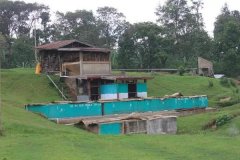
Characteristics of altitude taste in Essex plus Sheffield Coffee producing area description of brewing flavor of coffee beans in Edido cooperative
Professional coffee knowledge exchange more coffee bean information please follow the coffee workshop (Wechat official account cafe_style) since the implementation of the Ethiopian commodity exchange (EXC) exchange system in 2008, most raw coffee beans have been sold through competitive bidding under this system, but cooperatives are not within this jurisdiction.
Related
- Beginners will see the "Coffee pull flower" guide!
- What is the difference between ice blog purified milk and ordinary milk coffee?
- Why is the Philippines the largest producer of crops in Liberia?
- For coffee extraction, should the fine powder be retained?
- How does extracted espresso fill pressed powder? How much strength does it take to press the powder?
- How to make jasmine cold extract coffee? Is the jasmine + latte good?
- Will this little toy really make the coffee taste better? How does Lily Drip affect coffee extraction?
- Will the action of slapping the filter cup also affect coffee extraction?
- What's the difference between powder-to-water ratio and powder-to-liquid ratio?
- What is the Ethiopian local species? What does it have to do with Heirloom native species?

